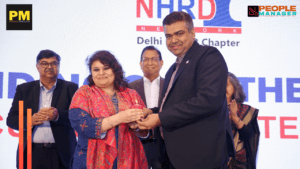Neurodiversity in DEI: Building Truly Inclusive Workplaces
Research from Harvard Business Review indicates that neurodiversity teams often excel at solving complex problems precisely because they approach challenges from different cognitive perspectives.

The integration of neurodiversity into Diversity, Equity, and Inclusion (DEI) initiatives represents a crucial evolution in workplace culture. Traditional DEI frameworks have primarily focused on visible dimensions of diversity, but neurodiversity—encompassing conditions like autism, ADHD, dyslexia, and other cognitive variations—demands equal attention and understanding in our evolving conception of workplace inclusion.
Neurodiversity acknowledges that neurological differences are natural variations in the human genome rather than deficits requiring correction. This perspective shift is fundamental to creating workplaces where diverse thinking styles are not merely tolerated but actively valued and leveraged to drive innovation and organizational success.
The Business Case for Neuroinclusion
From an organizational perspective, embracing neurodiversity offers significant competitive advantages. Neurodivergent individuals often possess unique cognitive strengths, including pattern recognition, problem-solving abilities, and innovative thinking. Companies like SAP, Microsoft, and JP Morgan Chase have implemented successful neurodiversity programs, reporting enhanced productivity, innovation, and quality of work in mixed-neurotype teams. These success stories demonstrate the tangible benefits of neuroinclusion while highlighting the importance of thoughtful implementation.
Research from Harvard Business Review indicates that neurodiverse teams often excel at solving complex problems precisely because they approach challenges from different cognitive perspectives. For instance, autistic individuals may exhibit exceptional attention to detail and pattern recognition, while those with ADHD might demonstrate remarkable creativity and ability to hyperfocus on subjects of interest. When properly supported, these diverse cognitive styles can combine to tackle problems that might stump more neurologically homogeneous teams.
However, it’s crucial to recognize that neuroinclusion should never be reduced to merely leveraging neurodivergent individuals for organizational gain or placing undue pressure on them to justify their presence through enhanced productivity metrics. True neuroinclusion recognizes the inherent value of neurological diversity and strives to create environments where all individuals can thrive as their authentic selves.
Beyond Accommodation: Toward Authentic Inclusion
The journey toward authentic neuroinclusion requires sustained effort and commitment. Organizations must invest time in systematically reviewing and revising processes and policies that may unintentionally create barriers for neurodivergent individuals in hiring, onboarding, promotion, and daily work life. This transformation demands careful consideration and ongoing refinement to create genuinely accessible opportunities for all individuals, regardless of their neurological makeup.
Traditional hiring practices often inadvertently screen out neurodivergent candidates through their emphasis on social conventions and communication styles that may not align with neurodivergent strengths. For example, the typical job interview process—with its emphasis on eye contact, rapid verbal processing, and social performance—can present significant challenges for autistic individuals who may excel at the actual job requirements but struggle with this particular assessment format.
Forward-thinking organizations are redesigning their talent acquisition approaches with neurodiversity in mind. This might include offering alternative assessment methods, providing interview questions in advance, or implementing skills-based evaluations that more accurately measure a candidate’s ability to perform job functions rather than their proficiency at navigating neurotypical social conventions.
Creating Neuroinclusive Work Environments
A comprehensive neurodiversity strategy should incorporate flexible work arrangements, sensory-friendly spaces, clear communication guidelines, and customized onboarding processes. Additionally, organizations must invest in education and awareness programs to help neurotypical employees understand and appreciate different cognitive styles.
This includes training on communication preferences, work styles, behaviours and the various ways different minds process information and contribute to organizational success.
Sensory considerations are particularly important for neuroinclusive environments. Many neurodivergent individuals experience sensory processing differences that can make conventional office environments overwhelming. Bright fluorescent lighting, background noise, strong scents, and visual clutter can trigger sensory overload, making it difficult to focus and function effectively.
Creating quiet zones, offering noise-cancelling headphones, installing dimmable lighting options, and designing distraction-reduced workspaces can make the environment more accessible to everyone, particularly those with sensory sensitivities.
Clear, direct communication protocols benefit the entire organization but can be especially crucial for neurodivergent team members. Ambiguous instructions, implied meanings, and unspoken expectations can create unnecessary challenges for individuals who process language literally or prefer explicit communication. By establishing norms that encourage straightforward communication, specific feedback, and written follow-ups after meetings, organizations create clarity that benefits all employees while removing potential barriers for neurodivergent team members.
The Broader Impact of Neuroinclusion
The benefits of this holistic approach extend far beyond measurable productivity improvements. Organizations that embrace authentic neuroinclusion often develop a culture that fosters a deep sense of belonging for all employees. This commitment to true inclusion resonates with socially conscious customers and stakeholders, creating a ripple effect of positive change throughout the business ecosystem. The impact extends to employee satisfaction, retention, and the overall workplace atmosphere.
The advantages of neuroinclusive initiatives transcend traditional metrics, touching on fundamental aspects of organizational justice and social responsibility. By creating environments where neurodivergent individuals can thrive authentically, organizations not only enhance their performance but also contribute to building a more equitable and inclusive society. This broader societal impact often translates into stronger brand loyalty, enhanced reputation, and deeper connections with communities.
The implementation of neuroinclusive practices also tends to improve working conditions for all employees, regardless of neurotype. Clear communication protocols, flexible work arrangements, and thoughtful workplace design benefit everyone, creating a more adaptable and responsive organizational culture that can better meet diverse needs and preferences.
Challenges and Considerations in Implementation
Despite the clear benefits, implementing effective neuroinclusion initiatives comes with challenges that organizations must thoughtfully address. One significant hurdle is the diversity within neurodivergent populations themselves—no two neurodivergent individuals are alike, and accommodations that benefit one person may not help another. This underscores the importance of individualized approaches rather than one-size-fits-all solutions.
Privacy and disclosure concerns also require careful navigation. While some employees may be comfortable discussing their neurodivergence openly, others may prefer to keep this information private due to concerns about stigma or differential treatment. Organizations must create safe environments where individuals feel empowered to request accommodations without fear of judgment or negative career consequences, while respecting each person’s choices regarding disclosure.
Another challenge lies in avoiding tokenism or performative inclusion. Hiring a few neurodivergent individuals without addressing deeper cultural and systemic issues risks creating isolating experiences rather than genuine inclusion. True neuroinclusion requires examining and adapting foundational aspects of organizational culture, from communication styles to performance evaluation criteria.
Practical Steps for Organizations
For organizations seeking to enhance their neuroinclusion efforts, several practical steps can provide a strong foundation:
- Conduct an audit of existing policies and processes with a neurodiversity lens, identifying potential barriers in recruitment, advancement, and day-to-day operations.
- Implement flexible work arrangements that accommodate diverse needs, including options for remote work, flexible schedules, and customizable work environments.
- Provide comprehensive education for all employees about neurodiversity, focusing on strengths-based understanding rather than deficit-focused perspectives.
- Partner with neurodiversity consultants or organizations specializing in workplace inclusion to develop evidence-based approaches tailored to your specific organizational context.
- Create clear paths for accommodation requests that minimize bureaucracy and respect privacy while ensuring neurodivergent employees can access the support they need.
- Establish mentorship or buddy systems to help neurodivergent employees navigate workplace culture and build meaningful professional connections.
- Hire a Job Coach to be the bridge between management and the employee and help them navigate the workplace. Job coaches are invaluable when it comes to guiding neurodivergent individuals on how to follow the spoken and unspoken rules of an organization while also building self-advocacy skills and the confidence to request for much-needed accommodations and support.
- Regularly evaluate the effectiveness of neuroinclusion initiatives through feedback from neurodivergent employees and adaptation of approaches as needed.
- Set up Neurodiversity-specific ERGs so that neurodivergent employees and their allies have a space to connect, share experiences, and advocate for their needs.
The Future of Neuroinclusive Workplaces
By viewing neurodiversity as an integral component of DEI, organizations acknowledge that cognitive differences contribute to workplace diversity as meaningfully as other demographic factors. This recognition helps create authentically inclusive environments where all employees can thrive, leading to improved organizational performance, enhanced creativity, and stronger competitive advantages in an increasingly complex business landscape.
As workplaces continue to evolve, particularly in knowledge-based and creative industries, the value of diverse thinking styles becomes increasingly apparent. Organizations that can effectively harness the full spectrum of human cognition will likely find themselves better equipped to solve complex problems, identify new opportunities, and connect with diverse customer bases.
The journey toward true neuroinclusion may be challenging, but the rewards—both tangible and intangible—make it an essential pursuit for forward-thinking organizations. By embracing neurodiversity not as a compliance requirement but as a valuable organizational asset, companies can unlock new levels of innovation, employee engagement, and social impact while creating workplaces where everyone has the opportunity to contribute their unique talents and perspectives.
Key Takeaways for Leaders
- Shift from accommodation to appreciation: Move beyond merely accommodating neurodivergent individuals to genuinely appreciating the unique perspectives and skills they bring to your organization.
- Implement universal design principles: Create systems and environments that work well for everyone by considering diverse needs from the outset rather than retrofitting accommodations later.
- Measure what matters: Develop meaningful metrics for neuroinclusion that go beyond simple hiring numbers to assess belonging, advancement opportunities, and retention of neurodivergent talent.
- Engage neurodivergent voices: Ensure neurodivergent individuals have meaningful input in developing and evaluating neuroinclusion initiatives rather than designing programs without their perspective.
- Cultivate sustainable approaches: Recognize that neuroinclusion is an ongoing journey rather than a one-time initiative, requiring consistent attention, refinement, and commitment.
By approaching neuroinclusion with intention, empathy, and strategic focus, organizations can create workplaces where cognitive diversity becomes a powerful driver of success while simultaneously advancing important social justice aims. In doing so, they not only enhance their own performance but contribute to building a world where neurological differences are recognized as valuable aspects of human diversity. For further insights into the evolving workplace paradigm, visit
- Neurodiversity in DEI: Building Truly Inclusive Workplaces - April 10, 2025







